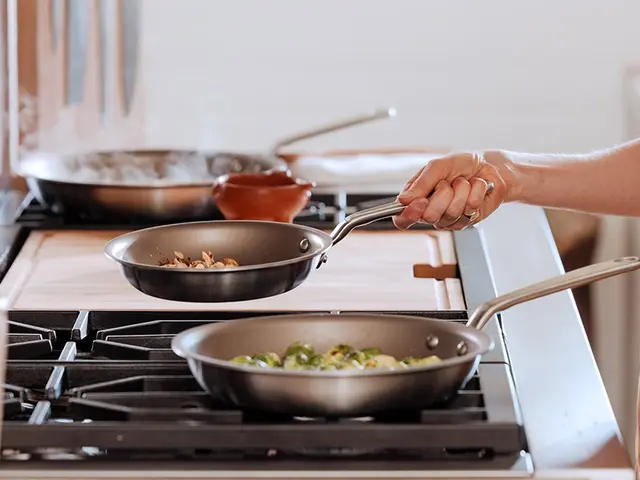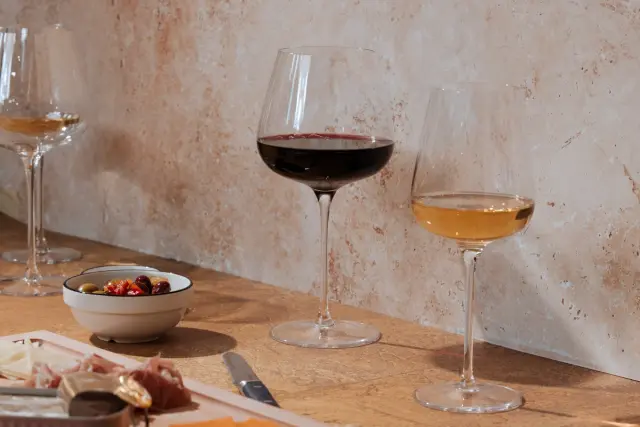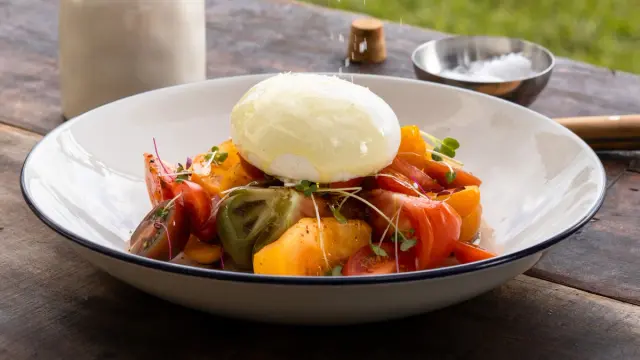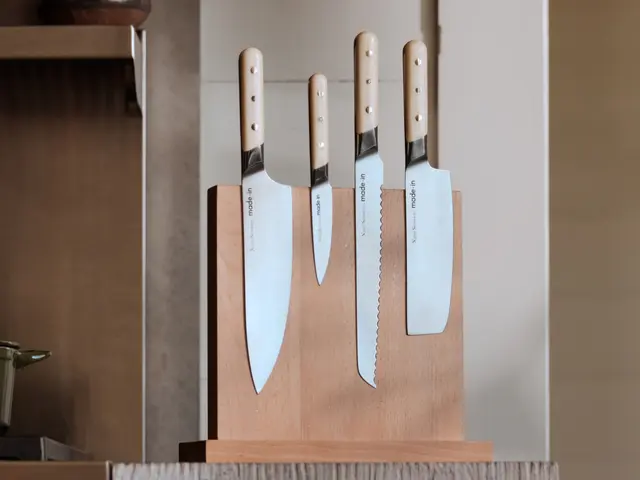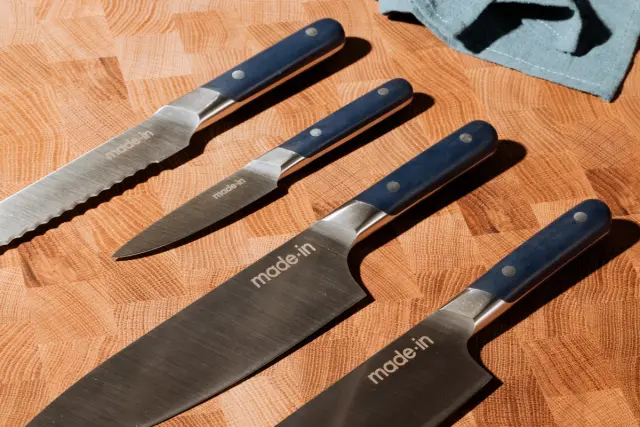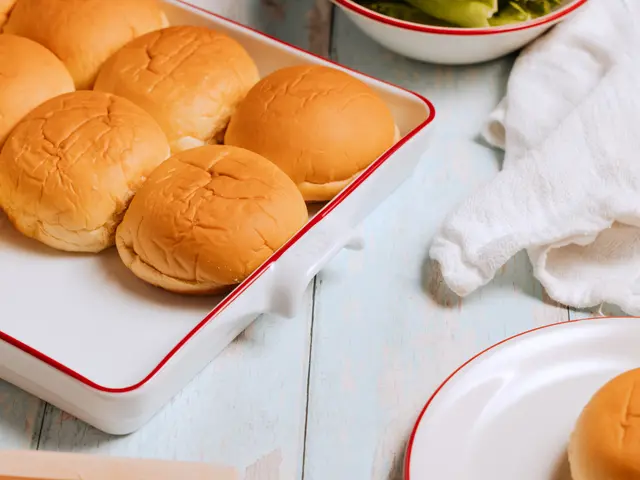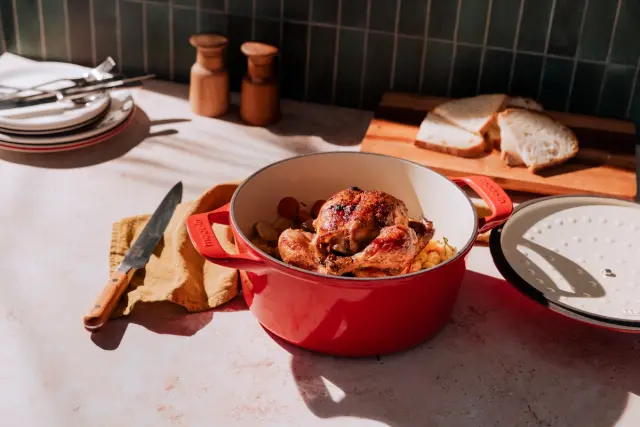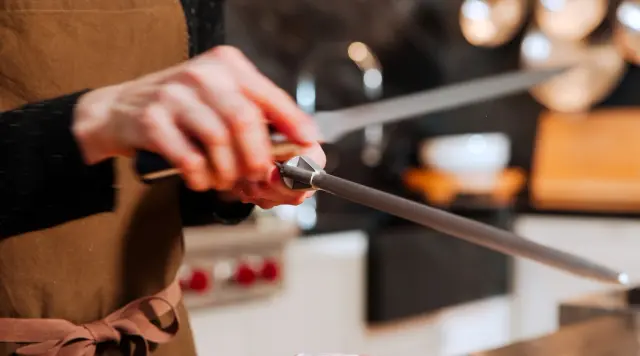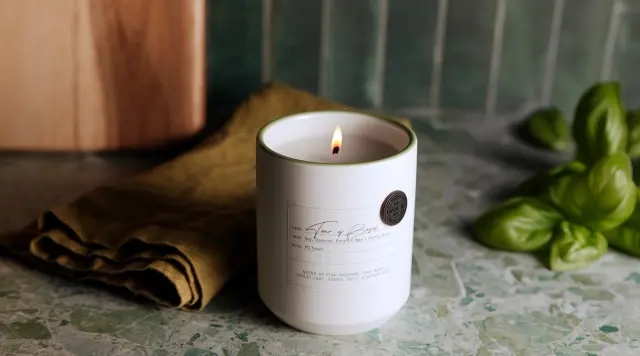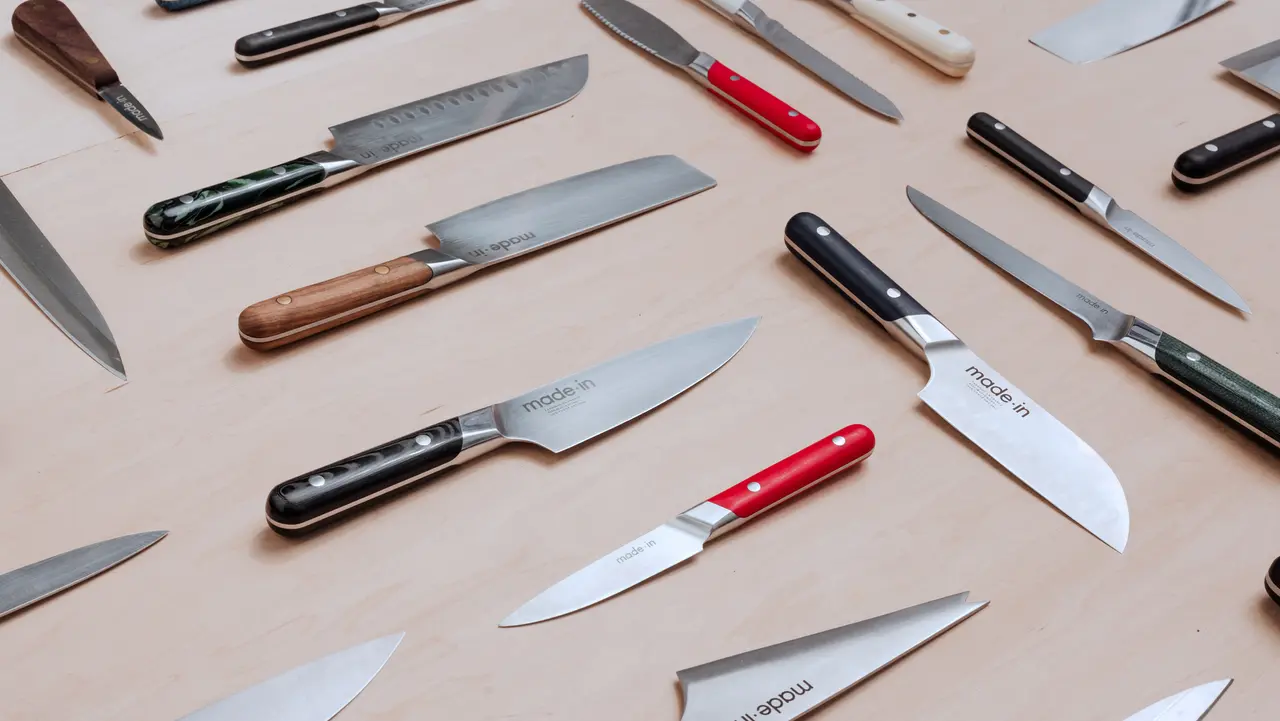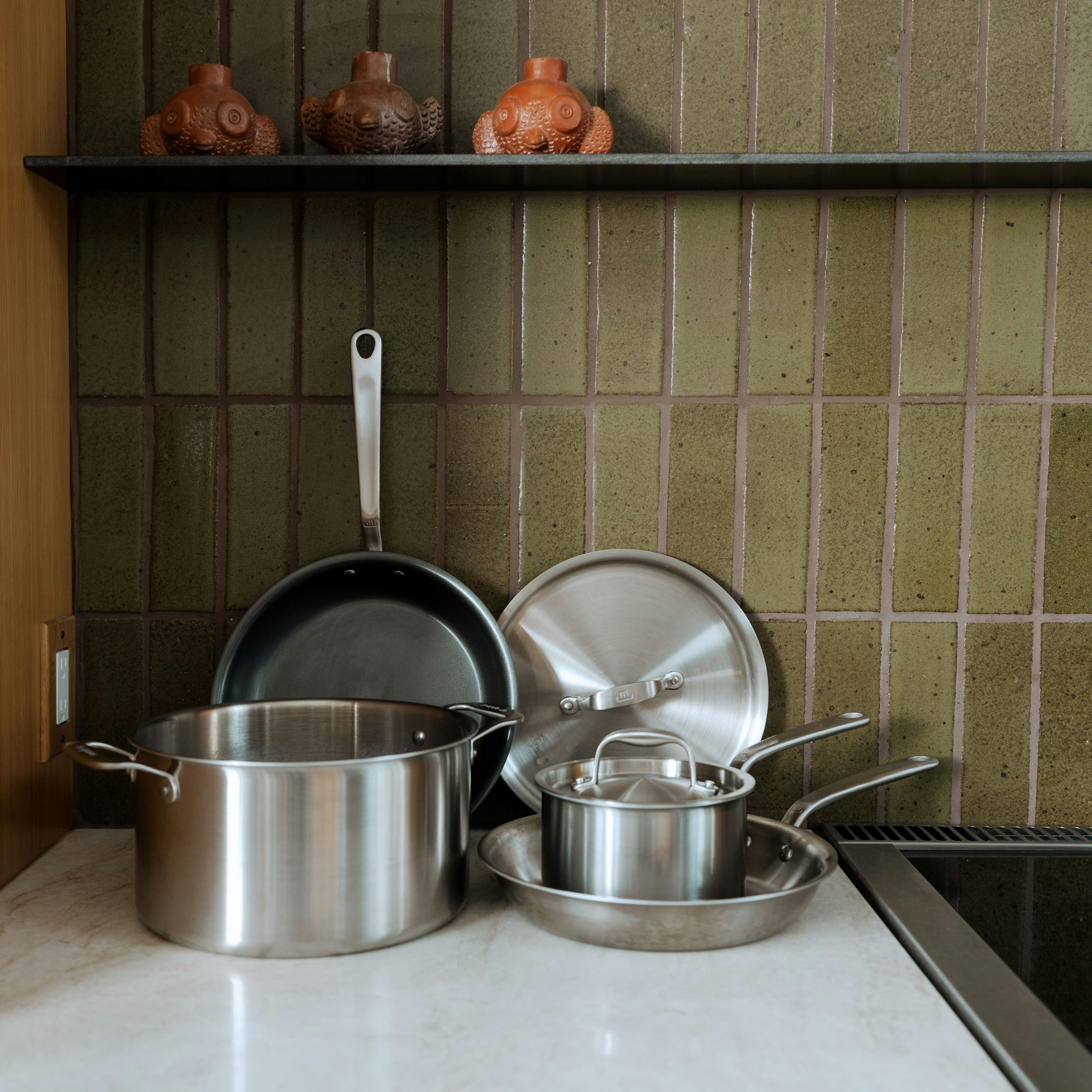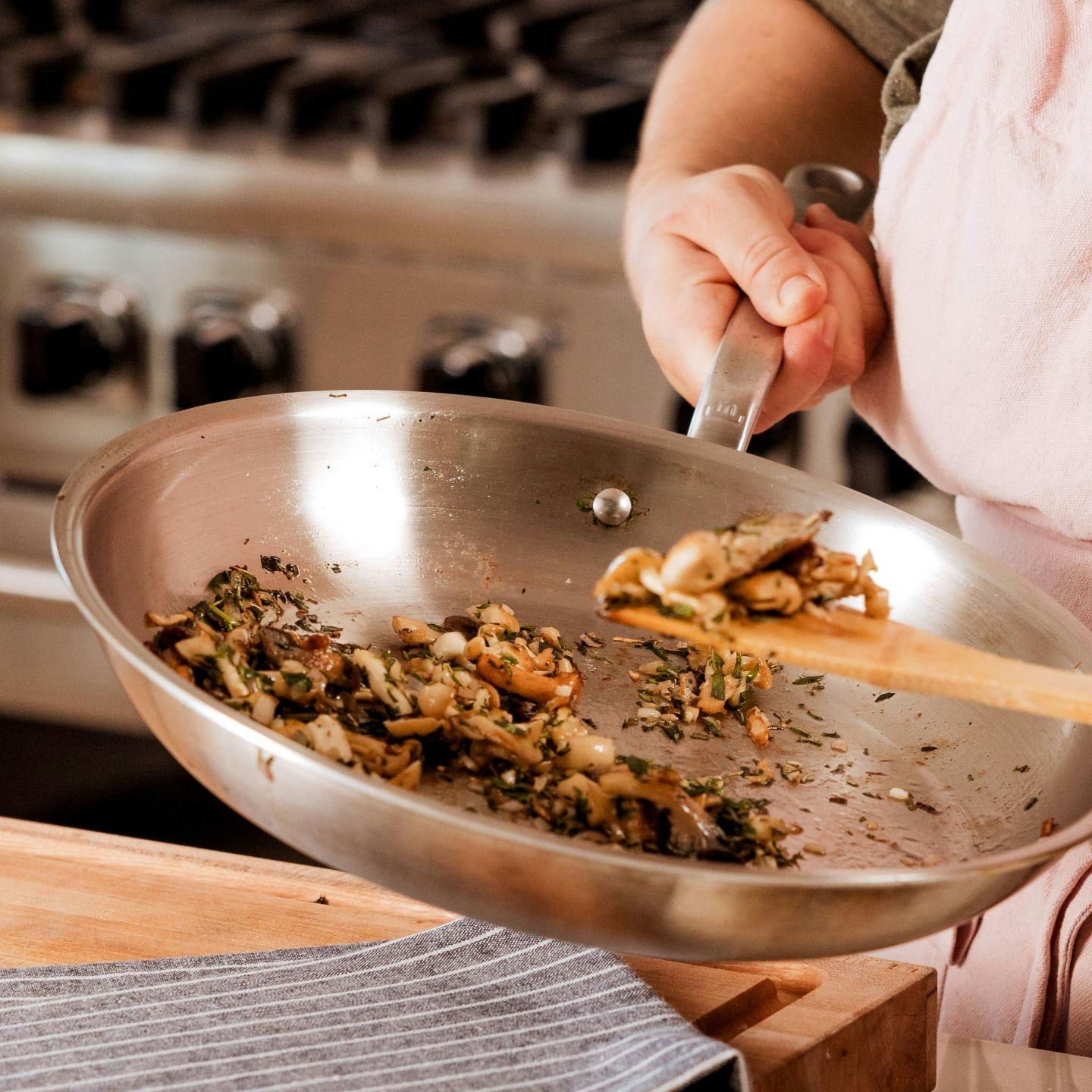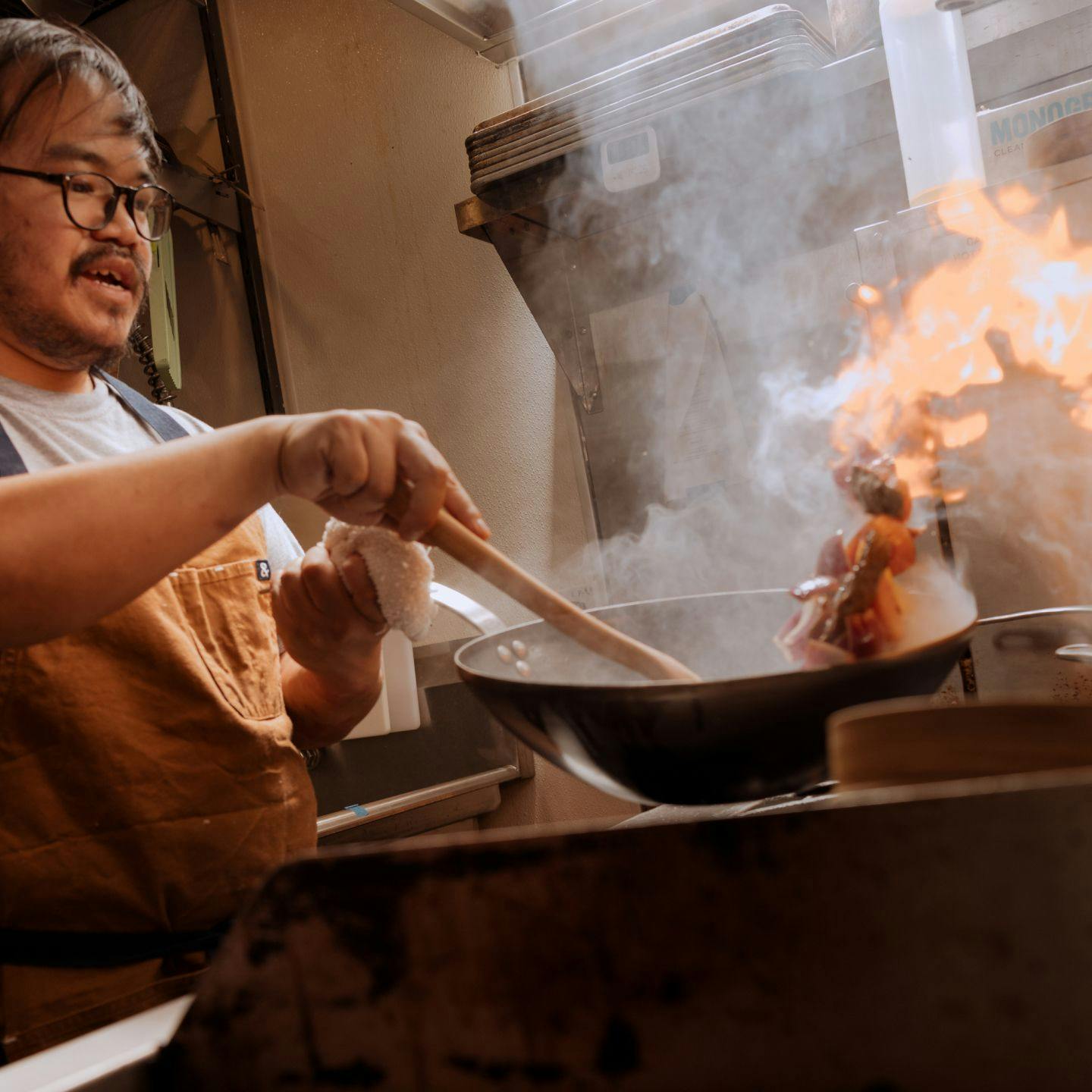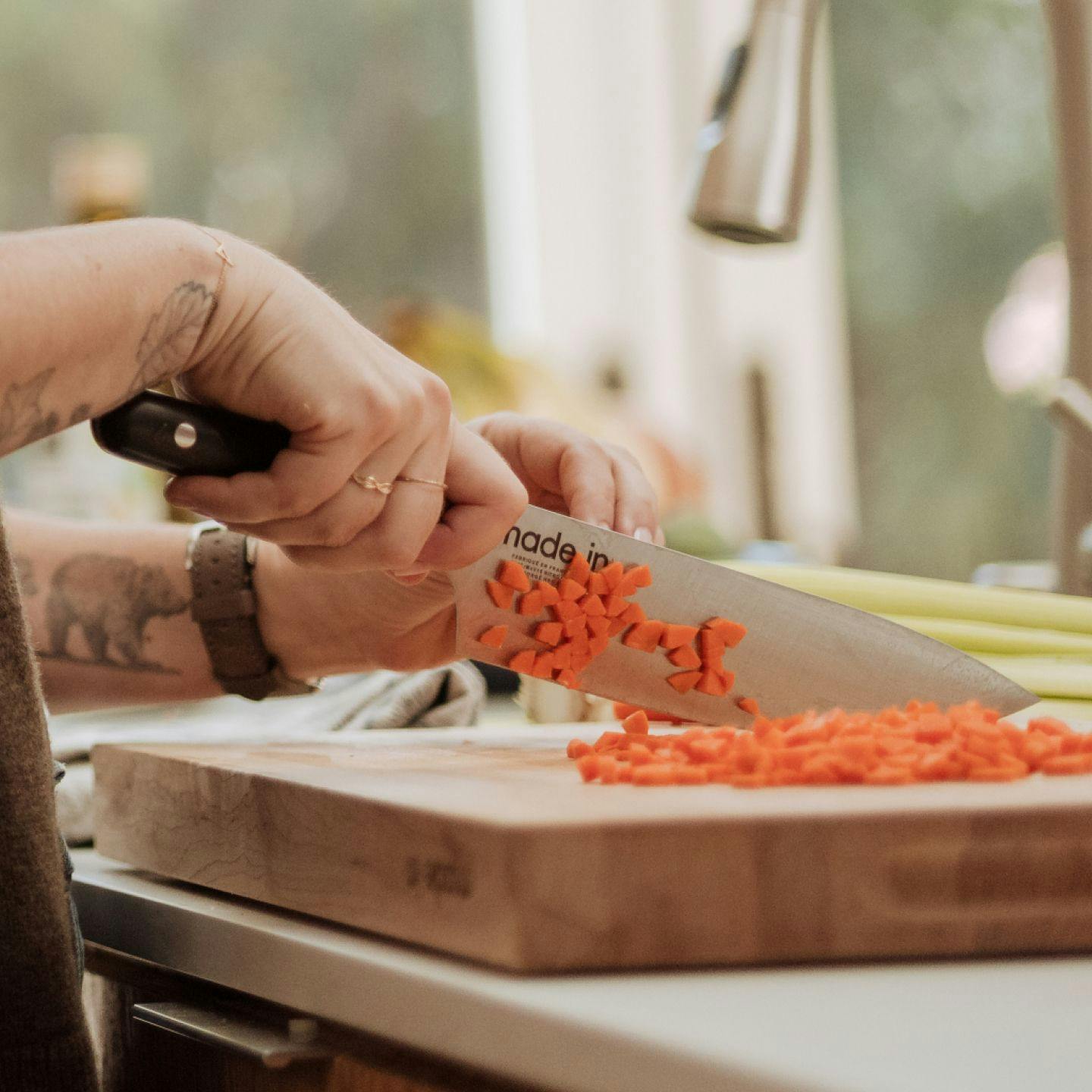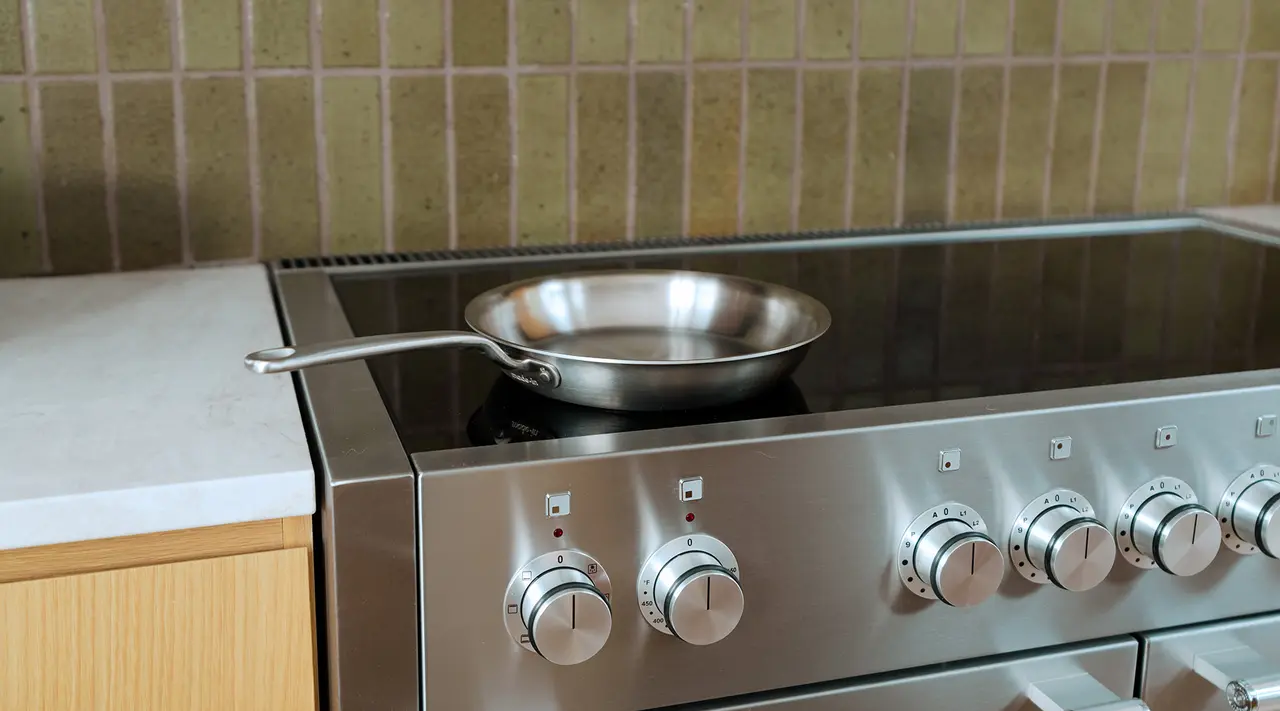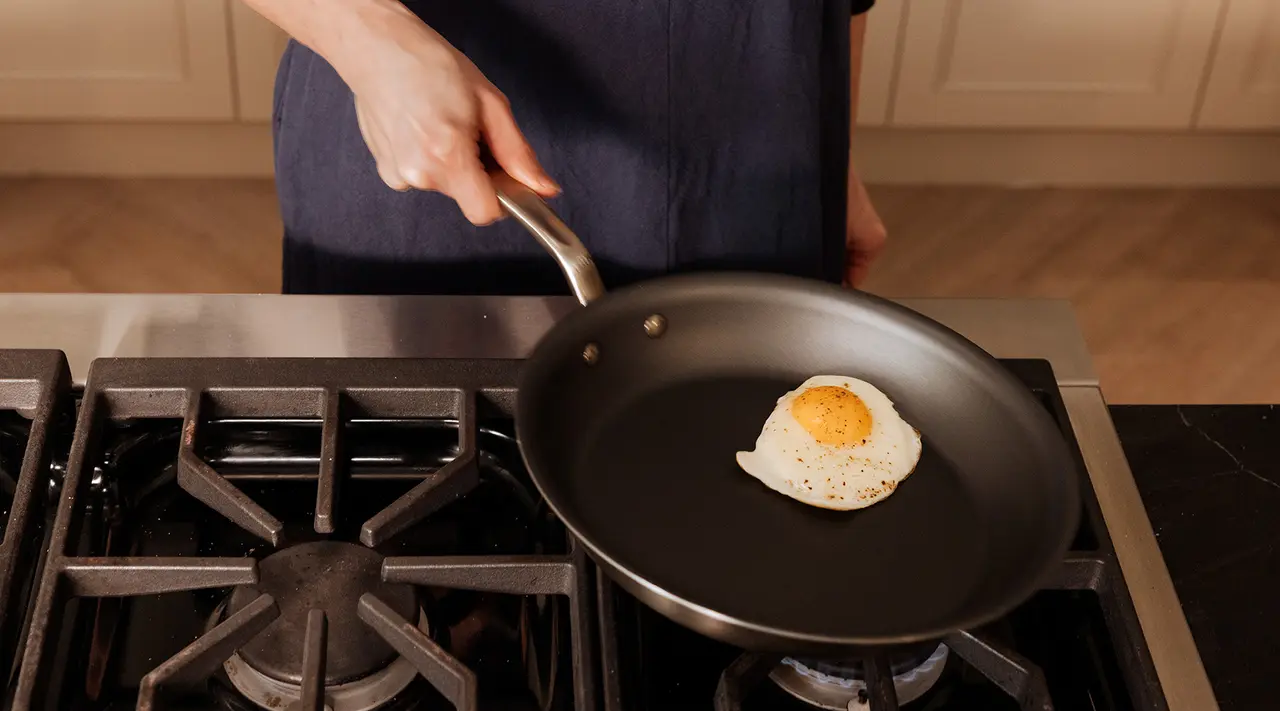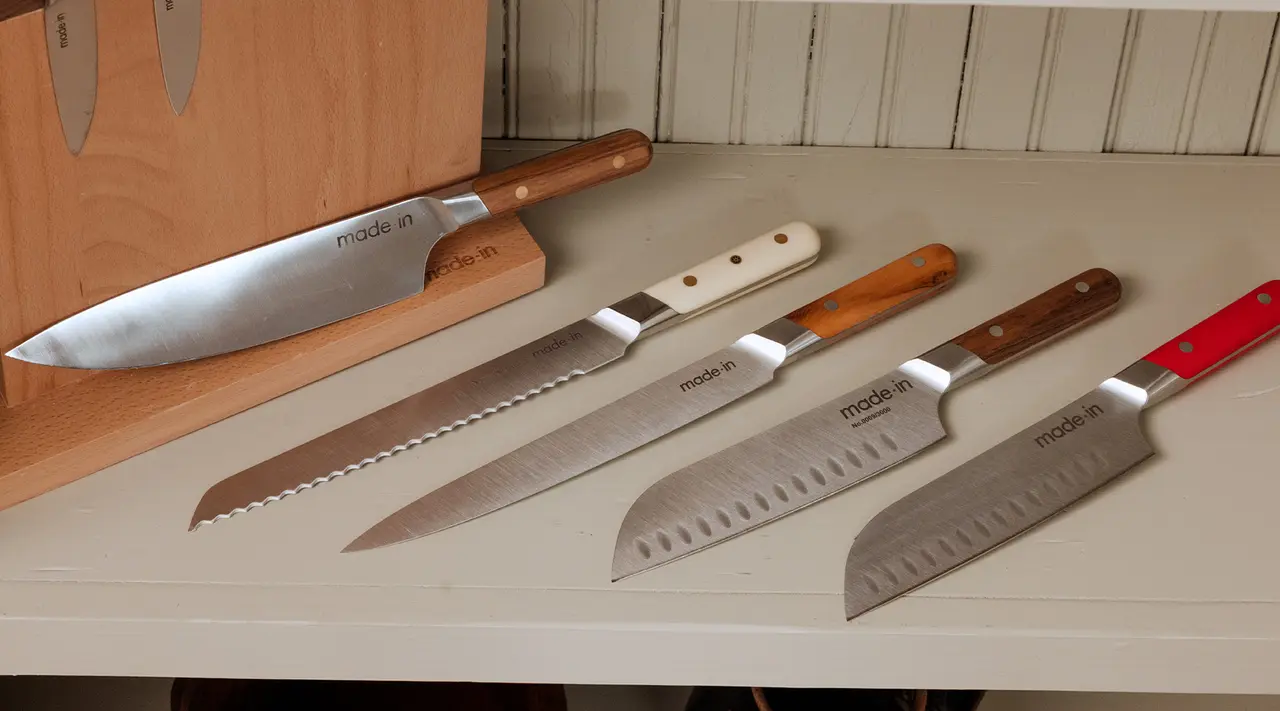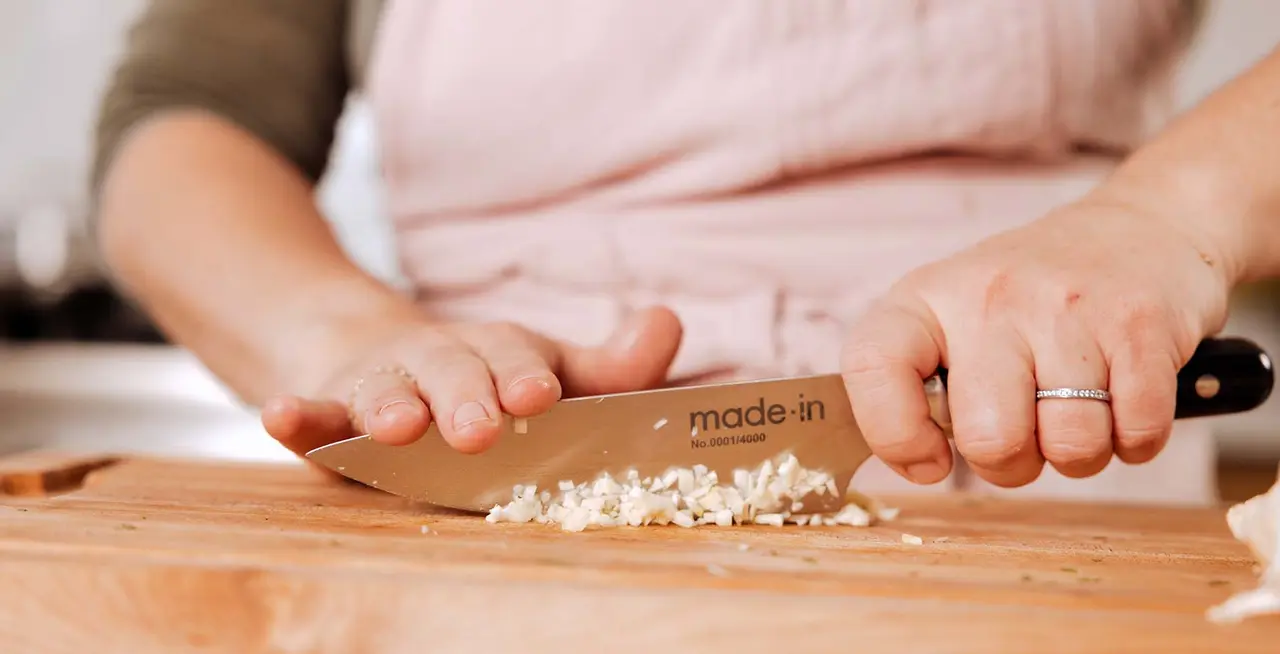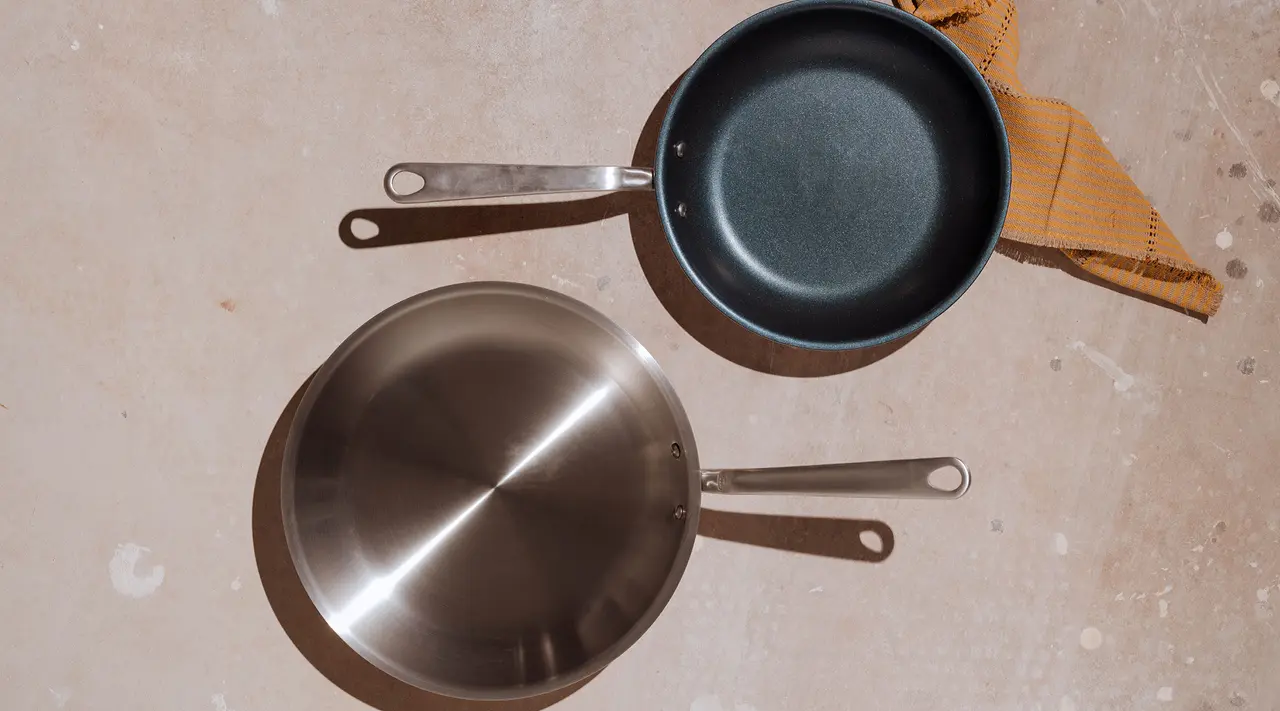You’ve probably never had to think about what metal your knife is made from. Once you’ve chosen the style (santoku or chef knife, paring or utility), manufacturer, and blade length, the rest seems secondary: steel is steel, right?
As you probably guessed from the title, there’s actually a bit more to it. Three of the most common knife varieties are carbon steel, stainless steel, and Damascus steel, though you’ll find an endless list of subcategories within those—all of which offer a slightly different performance and user experience. Since it’s easy to get a bit lost, we’ve boiled it all down into the following guide.
Understanding Knife Steel Options

Knife steel varies quite a bit, mainly in terms of toughness, hardness, ability to hold a sharp edge, and resistance to corrosion and rust.
Factors Influencing Knife Steel Performance
Kitchen knives take a serious beating. Even with careful maintenance, your knife is constantly coming in contact with cutting boards, bones, hard vegetables, and other materials that can gradually (or instantly) damage your blade. For that reason, knife steel should offer a good balance of the following factors:
- Hardness and edge retention: A knife’s hardness is determined by its ability to stand up to pressure—i.e., cutting boards, vegetables, etc. — without becoming bent or misshapen. A harder knife will typically have better edge retention, meaning it won’t need to be sharpened as frequently.
- Corrosion resistance: Knife steel should be able to stand up to oxygen, moisture, and acids without rusting or corroding. Stainless steel is known for its rust- and corrosion-resistance.
- Toughness and durability: Toughness is different from hardness. Steel with a very high Rockwell hardness score will hold an edge for a long time, but can be brittle and prone to snapping. Tougher steel, on the other hand, is more resistant to breakage, but can dull more quickly.
Common Types of Knife Steel

There are a few main categories of steel: stainless steel, carbon steel, tool steel, and alloy steel. Within these, you’ll find dozens of different grades and subcategories, each of which have slightly different properties—for example, our knives are made using X50CrMoV15 stainless steel, which is extremely tough and corrosion-resistant.
Varieties of steel typically vary by hardness level, how they’re made, and the ratio of elements such as carbon, chromium, and cobalt. We’ll be focusing on three types of knife steel today: stainless steel; carbon steel; and Damascus steel. You can find other common varieties in the list below.
- Powdered Steel
- VG10 Steel
- S35VN Steel
- AUS-8 Steel
- 154CM Steel
- CPM-S30V Steel
- M390 Steel
- N690 Steel
- ZDP-189 Steel
- CPM-20CV Steel
Stainless Steel Knives
Stainless steel knives—as well as other stainless steel cookware options—are made from an alloy (or mixture) of iron and carbon, and contain at least 10.5% chromium by weight.
Advantages:
- Stainless steel is a non-reactive material, so these knives resist rust and corrosion (and can be used to cut any ingredient).
- True to its name, stainless steel doesn’t discolor as easily as other materials: your knife will stay shiny and new-looking for longer.
- Tougher and less brittle than carbon steel
Disadvantages:
- Tend to dull more quickly—and thus require more frequent honing and/or sharpening—than options like carbon steel.
Maintenance Tips:
- Need to be sharpened more frequently than carbon steel knives.
- Don’t need to be wiped down immediately after use to avoid rust and corrosion.
Carbon Steel Knives
Similarly to stainless steel, carbon steel is made from an alloy of carbon and iron, though without the inclusion of chromium.
Advantages:
- Carbon steel is a harder (and sharper) metal than stainless steel, which therefore requires less frequent sharpening and won’t dull as quickly with use
- On that topic, carbon steel knives are typically easier to sharpen than stainless steel ones—even for beginners.
Disadvantages:
- This material is more on the brittle end, and is therefore more likely to break or chip if dropped.
- Much like carbon steel pans, knives made from this material are more vulnerable to rust, corrosion, and discoloration than stainless steel—be sure to keep this in mind for storage and maintenance.
Maintenance Tips:
- Since carbon steel is much more prone to rust and corrosion, carbon steel blades must be wiped clean and dried immediately after each use to prevent rust.
- Adding a layer of mineral oil to the blade before storing additional can provide an additional method of protection against rust while the knife is not in use.
Damascus Steel Knives
Known for being both strong and flexible, the original Damascus blades were made using an alloy called wootz, which was created in South India roughly 2,000 years ago.
Nowadays, modern Damascus knives are made using a process called forge welding, in which layers of different alloys are stacked together and then hammered into a single sheet. This is a much more involved, labor-intensive process than knives forged from a single type of steel, or stamped knives.
The forge welding process lends Damascus steel knives an instantly recognizable, marbled pattern, which is created using the forge welding process and provides each Damascus knife with a unique blade pattern.
Maintenance Tips:
- As with any knife, Damascus knives should be hand washed and dried thoroughly before storing.
- Make sure you know what metals your knife is composed of. Damascus knives with a higher percentage of carbon may need to be oiled prior to storage in order to prevent rusting.
Other Knife Steel Options
Aside from these three varieties, some other knife steel options include:
High Carbon Stainless Steel:
These knives contain a slightly higher percentage of carbon than typical stainless steel knives, which helps provide better hardness and edge retention.
Powdered Steel:
Powdered steel knives are made of—you guessed it—steel that’s been turned into a powder, then fused together to form a blade with a consistent grain structure and excellent edge retention.
Comparing Knife Steel Options

So where does all of this leave you, the prospective knife buyer? Here’s what to expect from each type of steel, from how it performs in the kitchen to how much you can expect to pay.
Performance Metrics
Think about the types of cooking you do on a daily basis. Do you do a ton of chopping, or are you constantly breaking down poultry, fish, and hard vegetables? If so, you’re probably going to want a blade that can hold an edge for a long time—i.e., something with a high hardness score, such as carbon steel. A harder knife will typically be sharper as well, so it’s ideal if you like to do a lot of precision knife work.
If you’re not picky—or you want something a bit tougher—stainless steel is a fine option.
Maintenance Requirements
As we touched on, steel with a higher carbon content is going to be slightly higher maintenance than steel with a lower percentage of carbon, because it rusts and corrodes more easily than stainless steel. You’ll need to make sure to clean it and wipe it dry immediately after using it. On the flip side, you won’t need to sharpen it as often.
Cost Considerations
Stainless steel knives are typically more expensive—this is because they contain other elements, such as chromium, which gives the steel its signature shiny finish and rust resistance. While you don’t have to spend hundreds of dollars to get a good knife, it’s worth it to invest a bit more to ensure you’re getting a fully-forged, full tang blade that will last you for years to come.
Versatility for Different Tasks
A knife’s ability to handle certain tasks comes down to a variety of factors, such as weight, size, bevel. Of course, a knife that’s easier to keep sharp will likely be better suited to precision cutting jobs, like creating garnishes, than a knife that dulls more quickly; on the other hand, a knife made of harder, more brittle carbon steel may not be the best choice for jobs like hacking through bones.
Ready to Shop?
Just like the style and length of your blade, the type of steel your knife is made from comes down to personal choice. But if you’re still undecided, you can always start with our selection of fully-forged, full tang, French made Knives—then get started on that mise en place.
